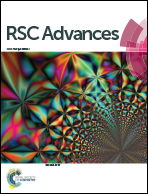An overview on dry reforming of methane: strategies to reduce carbonaceous deactivation of catalysts
Abstract
Catalytic reforming of methane (CH4) with carbon dioxide (CO2), known as dry reforming of methane (DRM), produces synthesis gas, which is a mixture of hydrogen (H2) and carbon monoxide (CO). CH4 + CO2 → 2CO + 2H2, ΔH° = 247.3 kJ mol−1, ΔG = 61 770–67.32T. The DRM process has gained much attention recently as it reduces greenhouse gases (GHG), CO2 and CH4, in the atmosphere. In addition to reducing GHG, the DRM process produces valuable chemicals (CO + H2), provides a good approach to utilizing biogas and natural gas with a significant amount of CO2, has good capability as a chemical energy transmission system as compared to steam reforming, and finally yields the desired unity H2/CO ratio for Fischer–Tropsch synthesis. The bimetallic Ni-based catalysts supported on Al2O3/TiO2 and promoted with Ce/ZrO2 show remarkable performances in the DRM process. But, carbonaceous deactivation of the catalysts is the major problem faced during this process. Numerous studies have been cited on various aspects of DRM, and some papers are also devoted to reviewing carbonaceous deposition problems and their remedies. However, some lacunae exist, which are highlighted in the present review paper on strategies to reduce the carbonaceous deactivation of catalysts for improved DRM efficiency by appropriate catalyst development, operating conditions, and flow reactor designs. The disposal of spent catalysts falls under the category of hazardous industrial materials and is also required to comply with stringent environmental regulations. Therefore, regeneration and reclamation techniques for spent catalysts have also been discussed.


 Please wait while we load your content...
Please wait while we load your content...